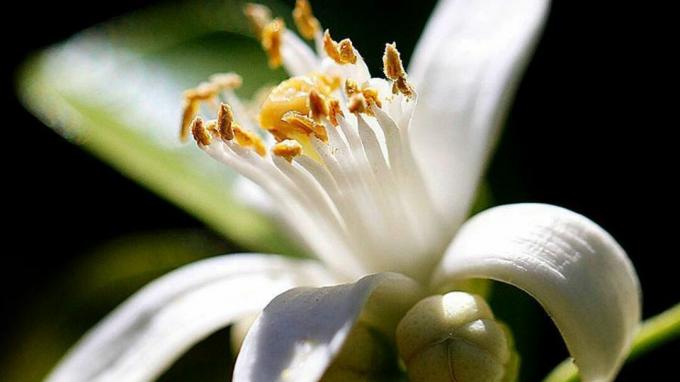Who was Câmara Cascudo?Cascudo Chamber he is considered, to this day, as one of the greatest researchers of national folklore.
But his acting doesn't stop there. Brazilian from Rio Grande do Norte, he was also a recognized university professor, historian, anthropologist, journalist and lawyer.
Index
- Biography
- Main works by Câmara Cascudo
- Chamber Cascudo Phrases
Biography
Luís da Câmara Cascudo, nationally known only as Câmara Cascudo, was born in Natal, capital of Rio Grande do Norte, on December 30, 1898. The son of a wealthy family, he came into the world after his three older brothers died. His father was a colonel and his mother a housewife.
He began his studies at the Externato Coração de Jesus. Afterwards he spent some student time with private tutors. Later, by his father's wishes, he was transferred to Colégio Santo Antônio.
Throughout his life he exercised various public professions. He was state legal adviser, court secretary, teacher, and school principal. He began his academic life studying Medicine. However, he transferred to the Law course, from which he graduated from the old college in Recife.
As a teenager he gained a reputation as a flirt. But he ended up falling in love with Dalia, who at the time was only 16 years old. They married in 1929 and had two children, Fernando Luís and Ana Maria Cascudo.
Related articles
Saint Augustine
Rosa Parks
Christopher Columbus
His activities as a journalist began at the newspaper “A Imprensa”, installed by his father. His first column was “Bric-A-Brac”. In it, he portrayed many aspects of the cultural scene in Natal.
He published daily chronicles in the newspaper “A República” and was also a contributor to various organs of the Pernambuco press. But he was not restricted to the state alone and had articles published in several Brazilian capitals.
Very conservative, the militancy in the press served, mainly, for him to act as a promoter of the integralist ideology, which was a national adaptation of fascism.
His first book “Alma Patrícia” was published in 1921. The work consists of small studies on prose and poetry writers who lived in Natal at the time. “Joio” and “Stories that time takes” were his next works in literature.
His greatest fame, however, came for his contributions to the Brazilian folklore. “Vaqueiros e Cantadores” was published in 1939 and marks the debut of Câmara Cascudo in this field of study.
- Free Online Inclusive Education Course
- Free Online Toy Library and Learning Course
- Free Online Math Games Course in Early Childhood Education
- Free Online Pedagogical Cultural Workshops Course
Also in this area, he founded the Sociedade Brasileira de Folclore, proposed a theory for popular culture and carried out a complex study of oral literature in Brazil, exalting it.
In 1951 he began teaching Public International Law at the Federal University of Rio Grande do Norte (UFRN). His most important work in the field of folklore was published three years later. “Dicionario do Folclore Brasileiro” has become a world reference on the subject.
Other works that consolidated its relevance in the area were “Rede de Dormir” (1959), History of Food in Brazil” (1967), “Names of the Earth” (1968) and “Civilization and Culture” (1973).
Câmara Cascudo continued to produce until the end of his life. He has received numerous awards, honors and honors. A few years after his death, in 1991, an image of him stamped the 50 thousand cruzeiros bill.
He died at the age of 87 in the city of Natal, where he was born, on July 30, 1986.
Main works by Câmara Cascudo
- Patricia's Soul (1921)
- Stories that Time Takes (1924)
- Traveling the Sertão (1934)
- Cowboys and Singers (1939)
- Anthology of Brazilian Folklore (1944)
- The best folk tales from Portugal (1944)
- Dictionary of Brazilian Folklore (1952)
- Oral Literature in Brazil (1952)
- Five People's Books (1953)
- Pedro Velho's Anthology (1954)
- Thirty Brazilian “stories” (1955)
- Geography of Dutch Brazil (1956)
- Raft (1957)
- Superstitions and Customs (1958)
- Folklore in Brazil (1967)
- Tradition, Science of the People (1971)
- Civilization and Culture (1973)
- Religion in the People (1974)
Chamber Cascudo Phrases
Comparing is always more convenient because it establishes the reference and with it the understanding.
My father said that the network was part of the family. The network collaborates in the dream movement.
Popular culture is what we live. It is the traditional and ancient culture that we learn from living at home. The other is what we study in schools, at university, and in the conventional pragmatic cultures of life. Popular culture is one that to some extent we were born knowing. Any one of us is a master, who knows tales, myths, legends, verses, superstitions, who knows how to make faces, shake hands, clap hands and everything that characterizes the anonymous and collective culture.
Eating standing up is a form of pasture, indispensable, fair, but not human, not natural, not social.
Those who do not have the sand of their land under their soul's feet cannot resist the frictions of their journey through life, they end up colorless, odorless and tasteless, like everyone else.
The password has been sent to your email.


